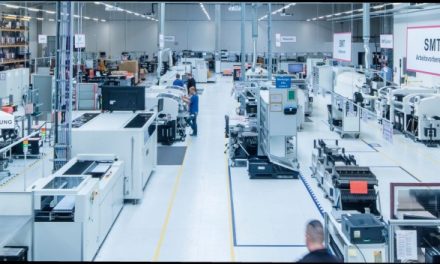Design for Manufacturing Explained
By Rob Moore, Electronic Manufacturing Solutions
Did you know it’s actually relatively easy to design a printed circuit board that cannot be assembled?
Perhaps the Gerber or drill files are missing. Or the board thickness doesn’t match the specified build. Maybe the dimensions on the drawing don’t match the Gerber outline.
Missing, ambiguous, incomprehensible or conflicting information affects about 30–50 per cent of new items. This leads to engineering questions and stops the clock on the project. About 70 per cent of manufacturing costs of a product — the cost of materials, processing and assembly — are also determined by early design decisions.
As a result, it’s essential to classify and resolve misinformation before the project commences and ensure design best practices are adhered to. Which is where design for manufacturing (DFM) comes in…
Optimising the design
Design for manufacturing is the process of optimising a part, product or component’s design to make it easier (and cheaper!) to manufacture. This is done by simplifying and refining the product design to allow a manufacturer to identify and prevent mistakes or discrepancies quickly.
When starting a design, there are plenty of things to think about, including the surface size, board thickness and copper weights. It’s also important to consider how changing one element can impact the rest of the design. For example, if you were to increase the board thickness, you would also need to increase the drill diameter.
Unless it has been stated specifically in the procurement documents, manufacturers can also add in features such as teardrops without asking. This is usually done to enhance the structural integrity of the PCB — particularly in the presence of thermal or mechanical stresses, such as vibration or flexing. However, doing so could violate the minimum design spacing requirement, so it’s always better to add these details during the DFM phase.
DFM occurs early in the product design stage, before tooling and the assembly process when it’s less expensive to address and fix potential problems. Doing so will then make the manufacturing process run more smoothly. On average, DFM will take around two weeks to complete — although the time taken will depend on the product, parts, manufacturing process and the complexity of the project.
Examining the five principles
The exact process of DFM will also depend on what product is being designed and produced. However, there are typically five principles examined during a DFM: process, design, material, environment and compliance.
The manufacturing process will depend on the number of parts being made, the material being used, the complexity of the surfaces and the tolerances required. For example, you wouldn’t want to use a highly capitalised process like injection moulding to create a low-volume part.
The actual drawing of the part or product is also essential and has to conform to good design principles for the chosen manufacturing process. Manufacturers often also receive drawings with unreasonably tight tolerances (the total amount a specific dimension is allowed to vary), which can cause problems with assembly, so it’s sometimes necessary to ease up on tolerances.
When selecting the correct materials for the part or product, it’s vital to consider its mechanical, optical, thermal and electrical properties, as well as its colour and flammability.
If the part or product is going to subjected to harsh environments such as extreme heat, cold or vibrations, it must also be designed to withstand these conditions to ensure it can function properly under its normal operating conditions.
Finally, the product must comply with relevant safety and quality standards. These standards could translate directly into demands or considerations placed on the design, as well as the manufacturing process. For example, in the medical sector, the ISO 13485 certification ensures the quality management systems of companies producing medical devices or parts.
Challenging the design
Aside from lower production costs, reduced assembly steps, quicker time to market and improved product quality are also advantages of properly executed design for manufacturing.
Ideally, DFM needs to include all stakeholders (designers, contract manufacturers, material suppliers and engineers). It’s much easier to pull stakeholders together early in the design process when developing a new product. Yet, even when dealing with an established product, challenging the original design is crucial.
Too often, mistakes in a design are repeated by replicating a previous design. However, DFM forces stakeholders to challenge every aspect of the design and question if there’s a way to make it better.












